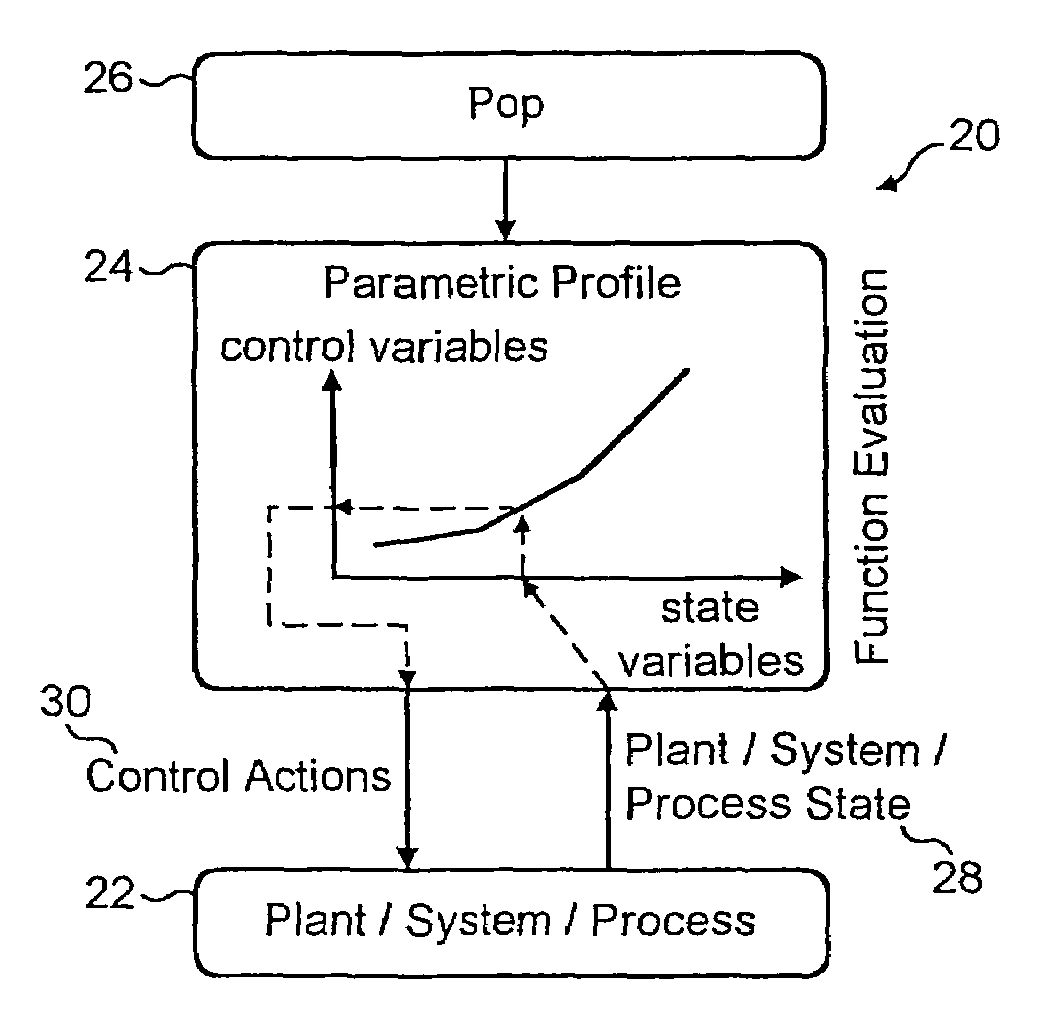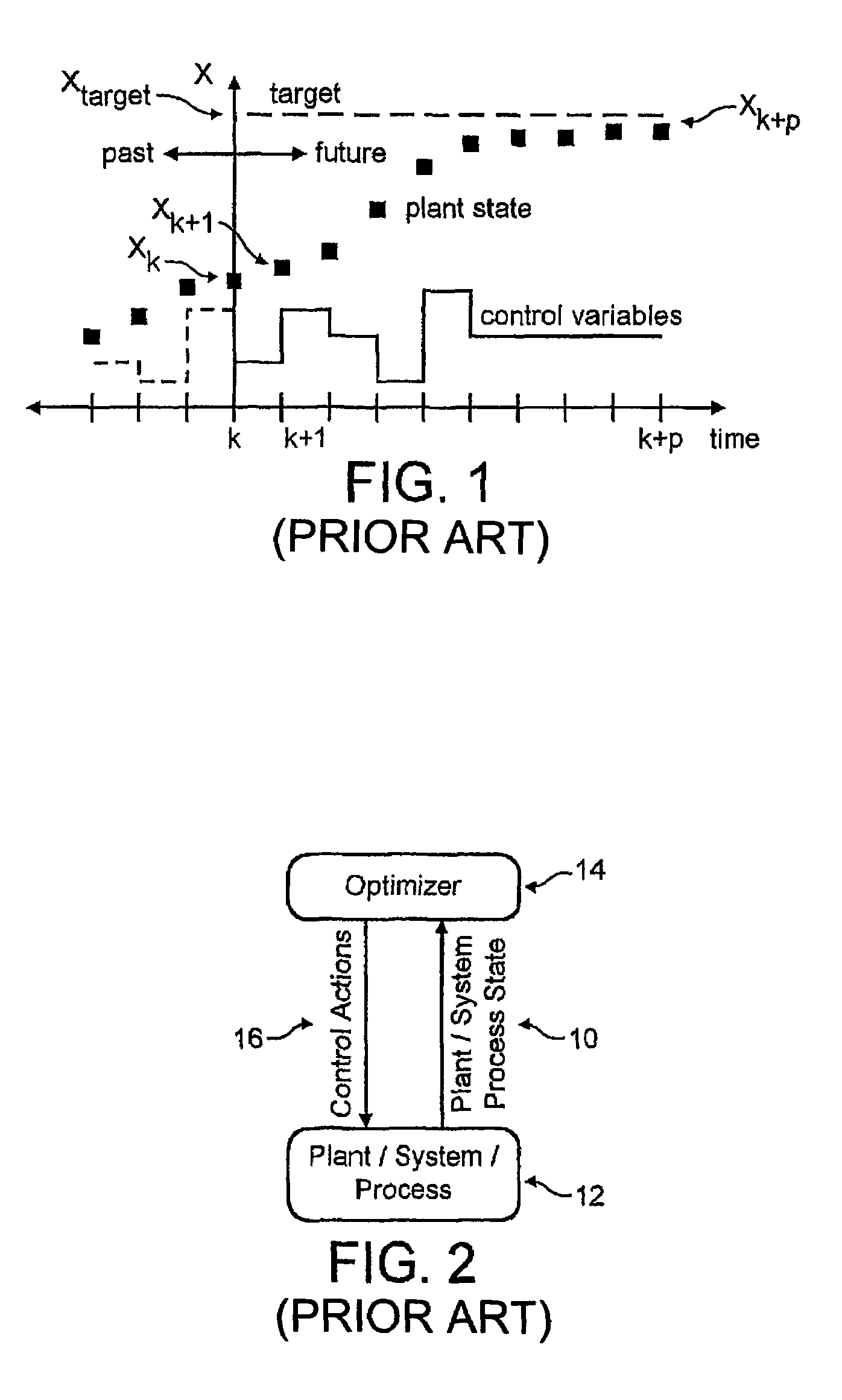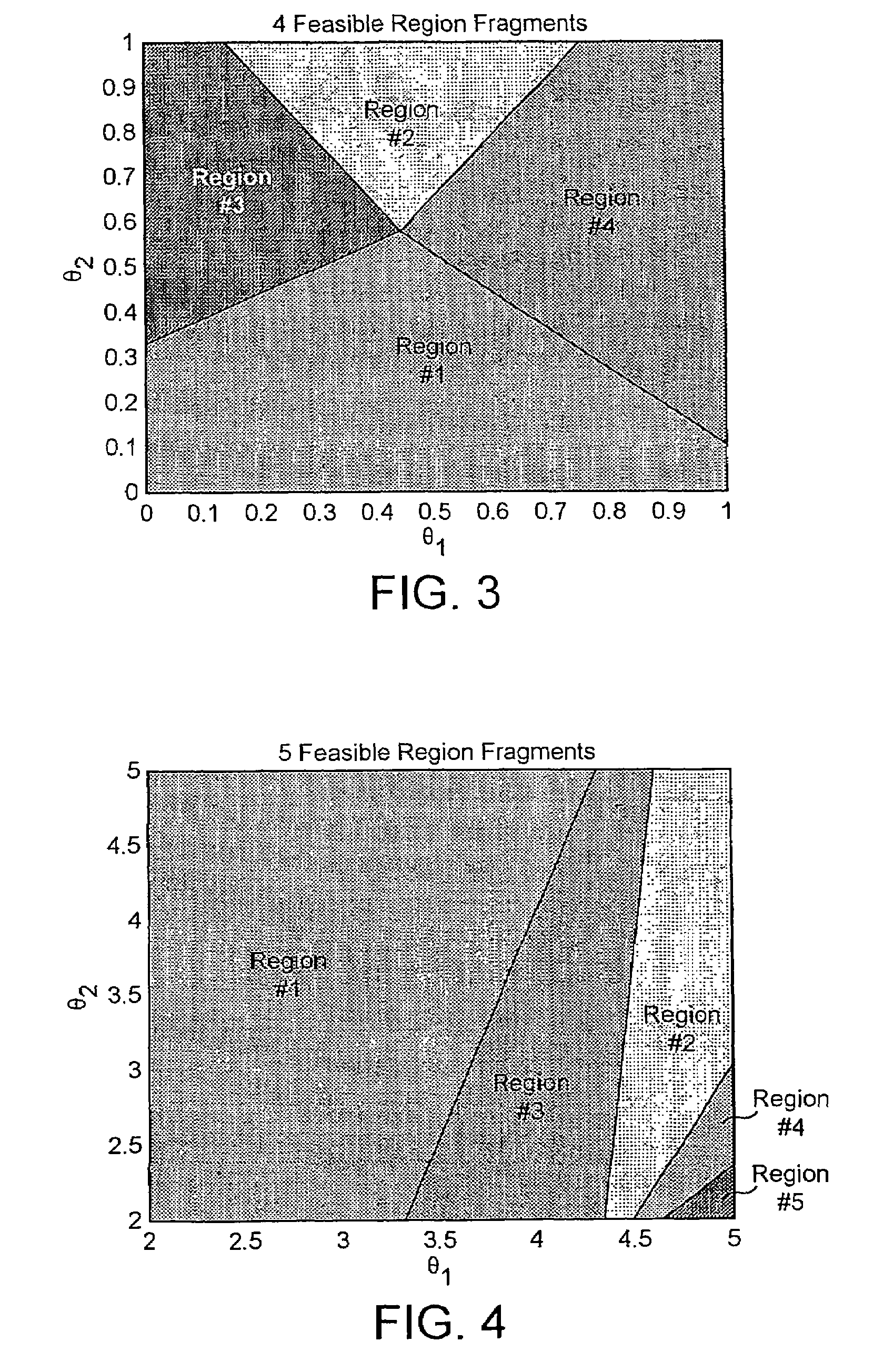Process control using co-ordinate space
a co-ordinate space and process control technology, applied in the field of process control, can solve the problems of inefficient energy or even space, high processing power required for real-time calculation, and inability to achieve accurate control, simple and manipulable parametric profile, and simple
- Summary
- Abstract
- Description
- Claims
- Application Information
AI Technical Summary
Problems solved by technology
Method used
Image
Examples
specific example
[0204]An example of parametric optimisation as applied to MPC in relation to a conventional process is now described with reference to FIG. 8. The problem is based on that studied in “Procedure for regulating control structure selection with application to the FCC process” Hovd, M. and Skogestad, S. (1993) AIChE J. 39, 1938. A fluidised catalytic cracker (FCC) designated generally 40 is used in the refinery process to crack heavier hydrocarbons to high Octane number gasoline and includes a regenerator 42 having a dense bed region 56 and dilute bed region 58, and a reactor-separator 44 having a riser 45. Heavy hydrocarbons are introduced at an inlet 46 at the bottom of the reactor-separator 44 and are mixed with hot catalyst which enters at rate Fs controlled by a valve 49 via line 48 from the regenerator 42. As the mixture rises through the reactor-separator 44 the heavy hydrocarbons break down to (i) lighter hydrocarbon products and (ii) coke. The coke is deposited on the catalyst ...
PUM
 Login to View More
Login to View More Abstract
Description
Claims
Application Information
 Login to View More
Login to View More - R&D
- Intellectual Property
- Life Sciences
- Materials
- Tech Scout
- Unparalleled Data Quality
- Higher Quality Content
- 60% Fewer Hallucinations
Browse by: Latest US Patents, China's latest patents, Technical Efficacy Thesaurus, Application Domain, Technology Topic, Popular Technical Reports.
© 2025 PatSnap. All rights reserved.Legal|Privacy policy|Modern Slavery Act Transparency Statement|Sitemap|About US| Contact US: help@patsnap.com



